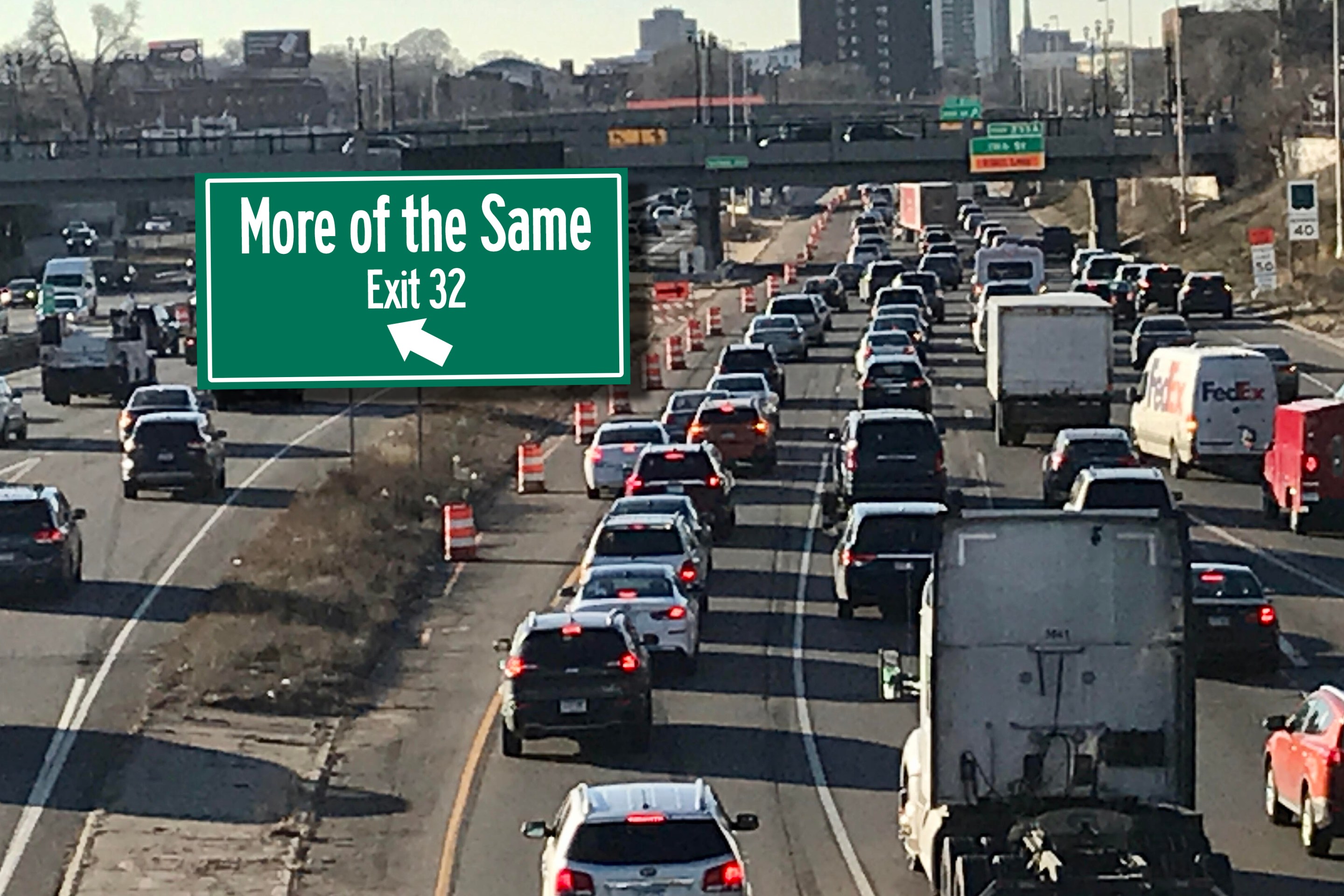
Sometimes calling your city council person or circulating a petition isn't enough. Here's an inspiring story about Seattle residents who got creative to highlight their fight for a safer street. Phyllis Porter and Gordon Padelford at Seattle Bike Blog explain Seattle's Rainier Avenue was badly in need of intervention:
With a crash every day on average, 7 businesses hit in the past year, and 630 injuries over the last three years, something had to be done. Business, community groups, and residents had had enough.
Last year the community came together to demand Rainier Ave S be made safer. For instance, a group calling themselves the Rainier Road Diet Supporters held a number of crosswalk protests.
The community group Rainier Valley Greenways rallied around a campaign called Safety Over Speeding to bring more attention to the problem. We collected signatures and photo petitions, created a Get Well Soon Rainier Ave Card for people to sign, posted flyers with the number of crashes next to dangerous intersections, and hosted a big crosswalk protest and rally.
And it worked:
The Department of Transportation responded to the community and overwhelming data by doing a safety corridor “pilot” between S Alaska St and S Kenny St, and planned to study an expansion of it for 2016. The pilot included adding a center turn lane to reduce turning collisions, adding bus priority to keep the popular route 7 on time, and improving crosswalks and signals for people walking.
The results are in and they are great! In the part that got improvements, aggressive speeding (over 40 MPH) is down 95%, injuries involving people walking and biking are down 41%, the fear of bus delays never materialized (the #7 bus has not been slowed down), traffic still flows, and it is now much more safe and comfortable to be in Columbia City and Hillman City. King 5 did a piece on the results and interviewed the owner of Lottie’s Lounge who said “The road diet has really improved the quality of life. The benefits far outweigh the downside.”
Elsewhere on the Network today: The Rails-to-Trails Conservancy says a big win for Cleveland trails in the latest round of TIGER grants is part of a larger trend that is making cities safer and better connected. Streets.mn says divisions within the cycling community are harmful to each group's shared interests. And Urban Indy shares a poll showing Indianapolis-area voters support plans to dramatically expand regional transit.





